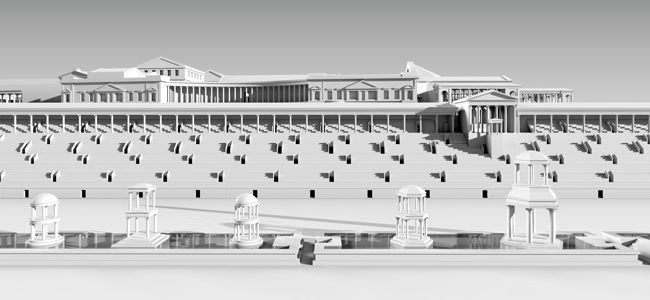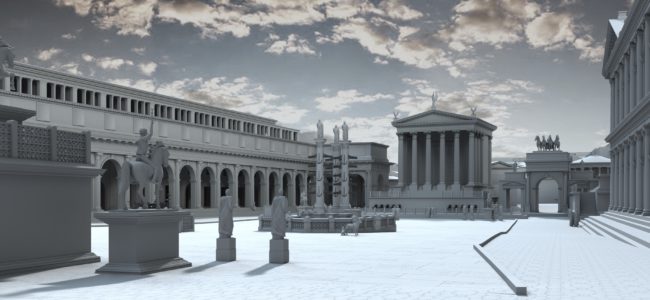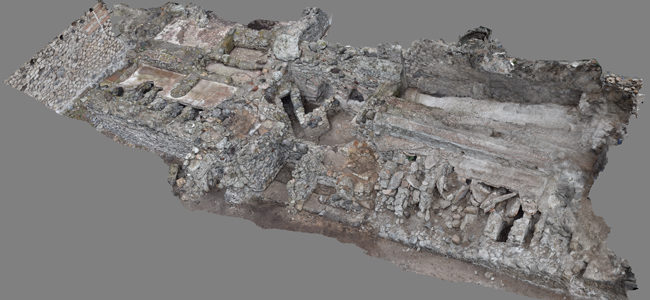Wherever societies order their lives in a city, a central role in the construction of the cultural and mental “households” of individuals and social groups is always played by urban spaces of varying functions. The city therefore offers its inhabitants not only living space, which allows them to pursue individual and collective interests and needs, but also a framework for cultural orientation and identity establishment.
| 29 | Researchers |
| 8 | Research Projects |
| 6 | Dissertation Projects |
| 77 | Publications |
| 9 | Events |
| 16 | Cooperating partners |
As recent sociological research has emphasized, a society or social group not only reacts to its existing urban space, but also designs, creates and transforms this space continually – after all, the society is the first to determine what is perceived as space and what can be considered as such. This process whereby urban spaces are actively shaped and modeled was referred to here using the term “cityscaping”, and played a central role in project description that follows. The aim of the research group was to study the processes by which urban spaces were actively appropriated in ancient cultures, and to examine this as a mirror of perceptions and reflections on urban spaces. The phenomenon of cityscaping therefore was treated from two perspectives: the first concerned the physical modeling and functionalizing of urban spaces through their architectural and urban-planning configurations (physical cityscaping), while the second concerned the literary modeling and functionalizing of urban spaces in texts that deal with the men that act within these spaces or that are composed by them (literary cityscaping). These two perspectives stand in a close, complimentary relation: the perception of urban space as living space, made tangible by the literary texts, also necessarily determines its material arrangement, or rather rearrangement; without an awareness of this reflection, architectural and urbanistic findings can hardly be interpreted; conversely, the literary confrontation with the city as a space of thought and discourse – independent of physical reality – is also nevertheless informed by experiences of the real and physically formed urban space, and hence is difficult to interpret without knowledge of this space. Only a reciprocal, interdisciplinary exchange between literary studies on the one hand and archaeology and building history on the other made it possible to comprehensively examine the cultural concept of cityscaping.
Research Projects
- (C-6-1) Raumnutzung und Raumbeanspruchung: Multivalenz des öffentlichen Raumes
- (C-6-2) Urban planning and urban develpment in Jordan (4th century BC – 4th century AD)
- (C-6-3) Christian urban discourse. The city as image and argument in the Patristic texts of the 2nd - 5th century AD
- (C-6-4) Antioch. Rhetorical modeling of a metropolis in late antiquity
- (C-6-5) Intellectual spaces in narratives of the city. Rome and Carthage in the Roman empire and late antiquity
- (C-6-6) The city from below – urbs satirica
- (C-6-7) Bell sound and public space in the Middle Ages
- (C-6-8) Bathing Culture and the Development of Urban Space: Case Study Pompei
Dissertations
- (C-6-1-1) On the forum. Use of Public Space in Ancient Cities of Italy
- (C-6-3-1) Late Antique Alexandria as a Contested Urban Space
- (C-6-6-1) The literary representation of Rome and its urban spaces in the two historiographical works of Tacitus
- (C-6-8-1) Honores inauditi. The display of statues in public space in Sicily from Hellenism to Late Antiquity
- (C-6-8-2) Landschaftsarchäologische Evidenzen in Samnium im Kontext der Samnitischen Kriege – Die samnitischen Höhenfestungen und ihr Umland
- (C-6-8-3) The Prytaneion of the 1st century BC to the 3rd century AD – Study of the Symbolical Center of the Polis Under Roman Rule



